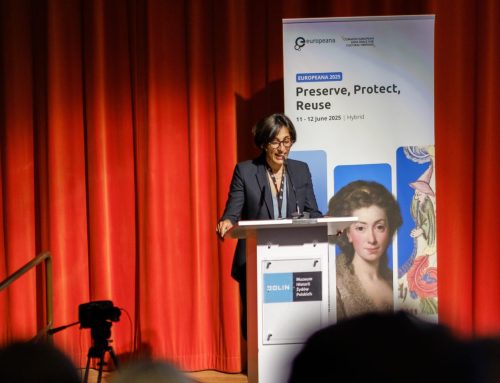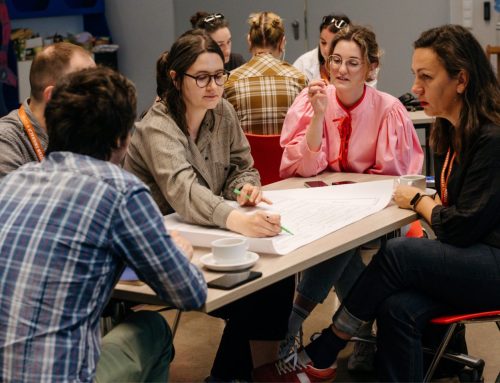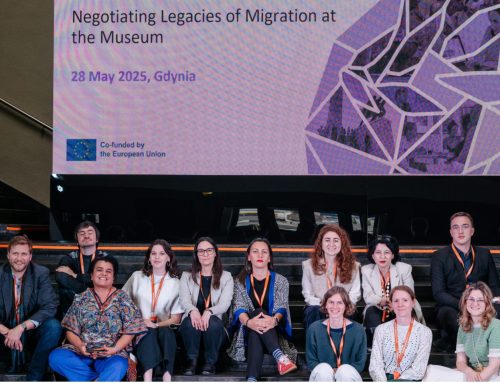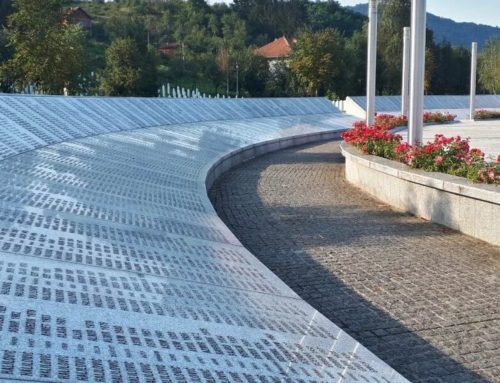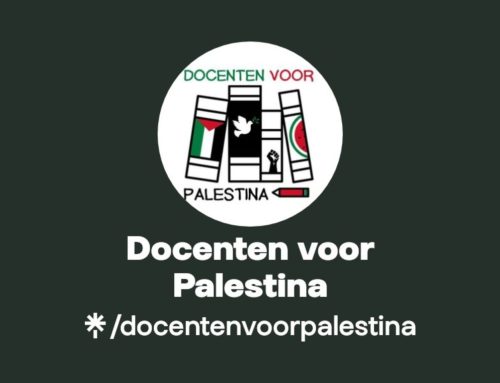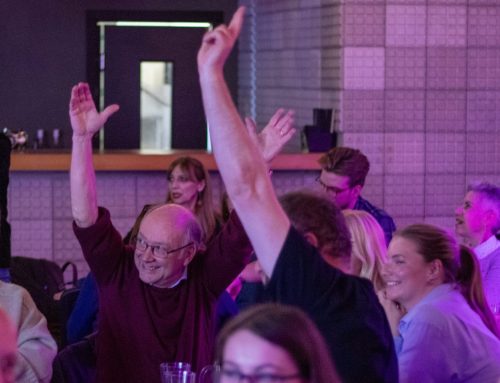For over two decades, Bosnian history curricula have been silent about the recent war. In 2018, however, Canton Sarajevo’s education ministry introduced the subject into classrooms for the first time, and now other cantons are following suit. The author visited Sarajevo in April 2019 to speak with various experts in the city about what this means for Bosnian history education and the memory of the war.
Introduction
The Bosnian War ended with the signing of the Dayton Peace Agreement (DPA) in 1995, which divided the country between its warring parties. Two entities, the Federation of Bosnia and Herzegovina (FBiH) and Republika Srpska (RS), were created; FBiH was divided into 10 autonomous cantons. Since the DPA made no specific arrangements for education, there are 13 education ministries in the country today. No effective mechanism has since been created to coordinate educational policy between them.
In 2000, the Council of Europe issued a recommendation that Bosnian schools refrain from teaching about the Bosnian War “to enable historians from all communities […] to develop a common approach.” The topic has thus not been addressed in the schools of any of the cantons since 2000.
New History Units
In 2017, in response to a petition submitted by the Academy of Sciences and Arts of FBiH, a committee of experts was drawn up by the Canton Sarajevo education ministry to form a writing team. This team of local history teachers, professors, and experts on genocide and modern history worked from July 2017 – January 2018, to create 5 new history curriculum units about the war:
- Military-political developments of the 1992-1995 war
- Military-political developments of the Siege of Sarajevo
- Everyday life in the Siege of Sarajevo
- War crimes and ethnic cleansing
- The Srebrenica genocide
The materials were circulated to teachers in April 2018, and implemented in May of the same year. The Bosnian War is now the final topic of 20th century history to be taught in the 9th grade of primary school (osnovna škola) in Sarajevo. Local education experts, in conversation with the author, identified the following three problems they see in the new units:
- Lack of multi-perspectivity
The narrative the units present is largely told from the perspective of Bosniaks as victims. One expert from the OSCE Mission to BiH mentioned that the units, though aimed to address the entire war, choose mainly to focus on the Siege of Sarajevo and the Srebrenica Genocide. She argued that this perpetuates an established tendency of one-sided history teaching, which divides the actors of the war cleanly into victims on “our side” and perpetrators on “the other side.” The 4th unit, for example, teaches a list of ICTY indictments, most of which are against Serbs, to emphasize this victim-perpetrator binary.
According to a history didactics professor from the University of Sarajevo, the units retell the same old story that has always been told of the siege without adding any nuance. She argued that multi-perspectivity would be achieved if the units had, for example, discussed the Kazani crimes (murders of Bosnian Serbs committed by the Bosnian army). In the 3rd unit, the text does state that the Bosnian army also committed crimes, but stipulates that they are not to be compared to those committed by Serbs. It is important for the units, however, to avoid mitigating the crimes of either side and to recognize that suffering was experienced by all civilians, regardless of which side of the frontline they were on.
- Lack of teacher training
A weak curriculum can be saved by a strong teacher, but a strong curriculum is useless in the hands of a weak teacher. Local experts have thus argued that teacher training sessions and support services would be a much better use of resources than developing new curricula. Teachers are overloaded with sources to use with the new units, but most have not even been taught how to use them properly.
Furthermore, the material that the new units cover is highly personal. The teachers all experienced the war in some way, either in the siege, in exile, or otherwise, and have vivid memories that will resurface in the classroom. How are they meant to handle these emotions while teaching? How can they manage the family stories that students will share during discussions? There has been no attempt to host psychological sessions for teachers to deal with this issue. Ultimately, without more support, the teachers cannot implement the new units effectively.
- Politicization of the initiative
As the new units were being implemented, Canton Sarajevo entered election season. The focus of the initiative thus became to complete it in time for the election, rather than ensuring it was done well. The process was concluded, according to an expert from the OSCE, without any thought about its application in the classrooms or its effect on other parts of the country, such as reciprocal responses from Republika Srpska education officials. In addition, the history didactics professor lamented that no follow-up feedback session was organized for the teachers after implementation, so teachers had no chance to voice their concerns or suggestions for improvement.
The region generally suffers from a lack of long-term planning and commitment in education policies. Politicians have little incentive to implement policies that take time to bring results, since they will not necessarily be there to reap the rewards and receive due credit. Instead of investing in long-term goals, they prefer to apply short-term solutions to look good for the next election.
What’s next?
Following Sarajevo’s initiative, more and more cantons are introducing the war into their curriculum, but without coordination, their approach and content are bound to vary. So far, new units have been introduced in cantons Zenica-Doboj, Tuzla, and Una-Sana, and the entity of Republika Srpska. In RS, for example, it has recently been announced that new history textbooks and curricula will be developed to be more in line with Serbian programs. It will be interesting to see how the new units of other FBiH cantons will reflect varying interpretations of the war depending on their place of origin.
Meanwhile, local experts had been optimistic that a new, more progressive government had come to power in Sarajevo. However, the new Minister Zineta Bogunić resigned this July after only 7 months in office. The reason put forth by the media was that she was under pressure by the Prime Minister to pass a new law on higher education, which would introduce more governmental control over the University of Sarajevo. In any case, the new education ministry advised education experts at a recent meeting not to expect too much, since a strong shift in policy would likely be “too radical” to survive.
Catherine Savitsky is a Master’s student at the University of Toronto, studying European Studies. She visited Sarajevo in late April 2019 and conducted interviews with stakeholders as part of research for her Master’s thesis about the politicization of the siege’s collective memory in Sarajevo’s education system.



